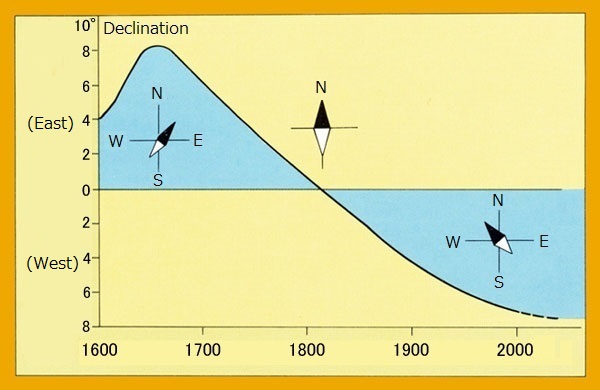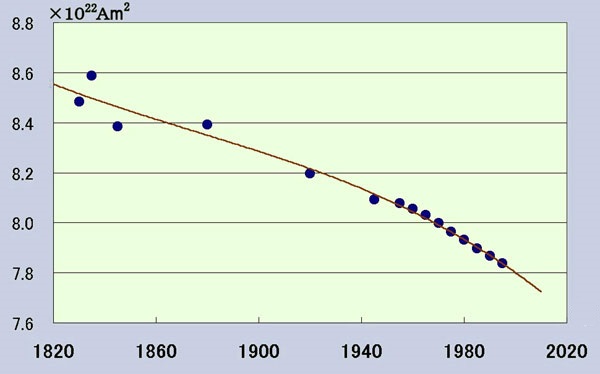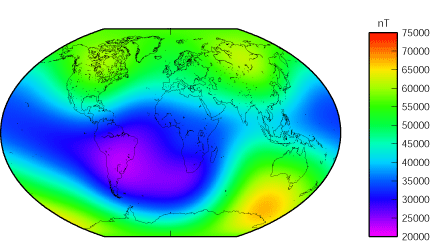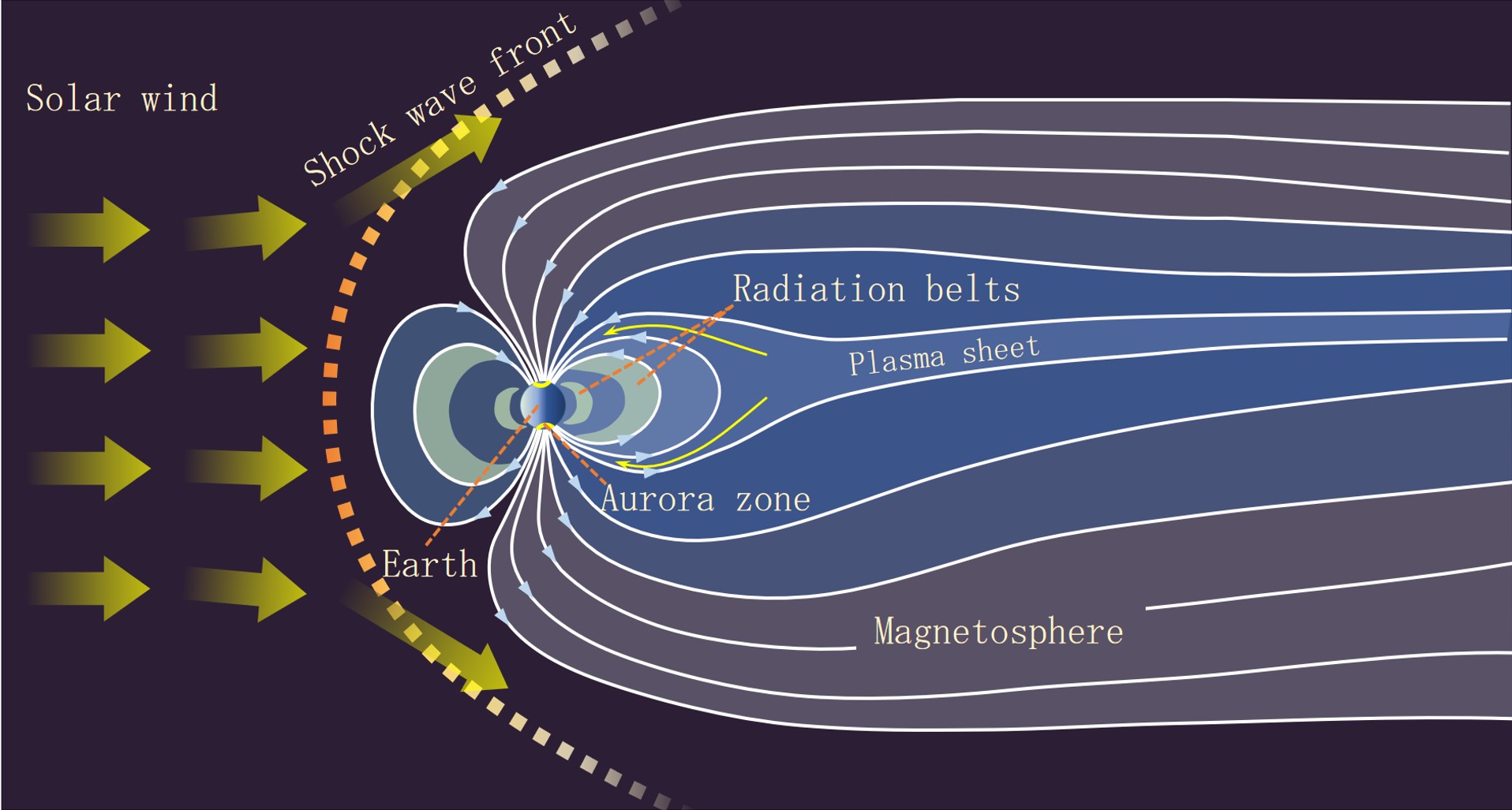The Earth's geomagnetic fields (demonstrated by compass movement) constantly vary in relation to environmental changes, such as convective motion in the Earth's core and solar/crustal activity.
Most part of the geomagnetic field is generated in the outer core of the Earth's interior, where iron is the main component. The iron there is in a highly conductive molten state due to enormous pressure and high temperature, and magnetic fields are associated with related electric currents. Active research on this geodynamic mechanism (geodynamo) remains ongoing.
The compass direction (geomagnetic declination) in Tokyo today is 7 degrees west of geographic north, but 200 years ago (when the reference Tadataka Ino map was made) pointed almost true north, and records from Dutch ships arriving in Japan around 350 years ago show values of around 8 degrees east. This indicates that the direction around Japan has shifted from east to west by about 15 degrees in the last 350 years. Such geomagnetic field changes over periods ranging from tens to hundreds of years are recognized worldwide and are known as the secular variation of the geomagnetic field. Thus the spatial pattern of the geomagnetic field is changing on the global scale.

−Secular variations in declination at Kakioka−
(based on monitoring around Japan)
The magnetic field of the Earth's outer core origin essentially reflects a bar magnet in the planet's north-south axis. The intensity of this magnetism has been decreasing for over 200 years, but this represents only a small part of fluctuations that have been ongoing over tens of thousands of years. It may be unlikely that the geomagnetic field will decay at a similar rate and disappear. The magnetic field of the Earth's outer core origin essentially reflects a bar magnet in the planet's north-south axis. The intensity of this magnetism has been decreasing for over 200 years, but this represents only a small part of fluctuations that have been ongoing over tens of thousands of years. It may be unlikely that the geomagnetic field will decay at a similar rate and disappear.

−Decrease in geocentric dipole intensity−
(with the magnetic moment of the Earth's magnetic field regarded as a bar magnet)

−Surface distribution of magnetic field intensity(from IGRF 2000)−
A compass needle has not always pointed to north. It is believed that there have been 11 reversals of the Earth's magnetic poles in the last 3.6 million years, with the most recent occurring 780,000 years ago.
In relation to the flow of high-energy particles emitted from the sun (solar wind), the Earth's magnetic field in space is shaped as if being blown away from the sun. The region dominated by this field is called the magnetosphere, which protects the Earth from direct exposure to solar wind.

−Earth magnetosphere−
(compressed to approx. 10 times the Earth's radius on the day side due to solar wind; elongated tail on the nighttime side)
Solar activity affects the Earth's environment via the magnetosphere. Flares and other explosive phenomena on the solar surface can trigger geomagnetic storms on Earth, causing radio interference, communication problems, auroras and other issues.
Clear geomagnetic daily cycles are observed with periodicity based on the Earth's rotation due to effects from solar radiation on the ionosphere (the ionized layer between the magnetosphere and the atmosphere).
Geomagnetic pulsations are a low-frequency natural electromagnetic field variation, with oscillatory fluctuations featuring periods ranging from 0.2 s to 1,000 s as observed in geomagnetic/geoelectric field changes. Particular activity is observed during geomagnetic storms due to hydromagnetic waves in the magnetosphere.
The International Association of Geomagnetism and Aeronomy (IAGA) categorizes such pulsations as Pc (with continuous and regular waveforms) or Pi (with irregular waveforms and a broader bandwidth with respect to the dominant period). These are further subdivided depending on the period.
In-earth rock masses generate magnetism and electricity due to stress, and slightly affect geomagnetic fields due to crustal strain. Other electromagnetic phenomena related to groundwater also have significant effects.
As magnetism in volcanic rock changes with temperature and stress, magnetic fields near active volcanoes depend on those within mountain-body that vary with volcanic activity.
Copyright (c) Kakioka Magnetic Observatory, Japan Meteorological Agency. All rights reserved.
